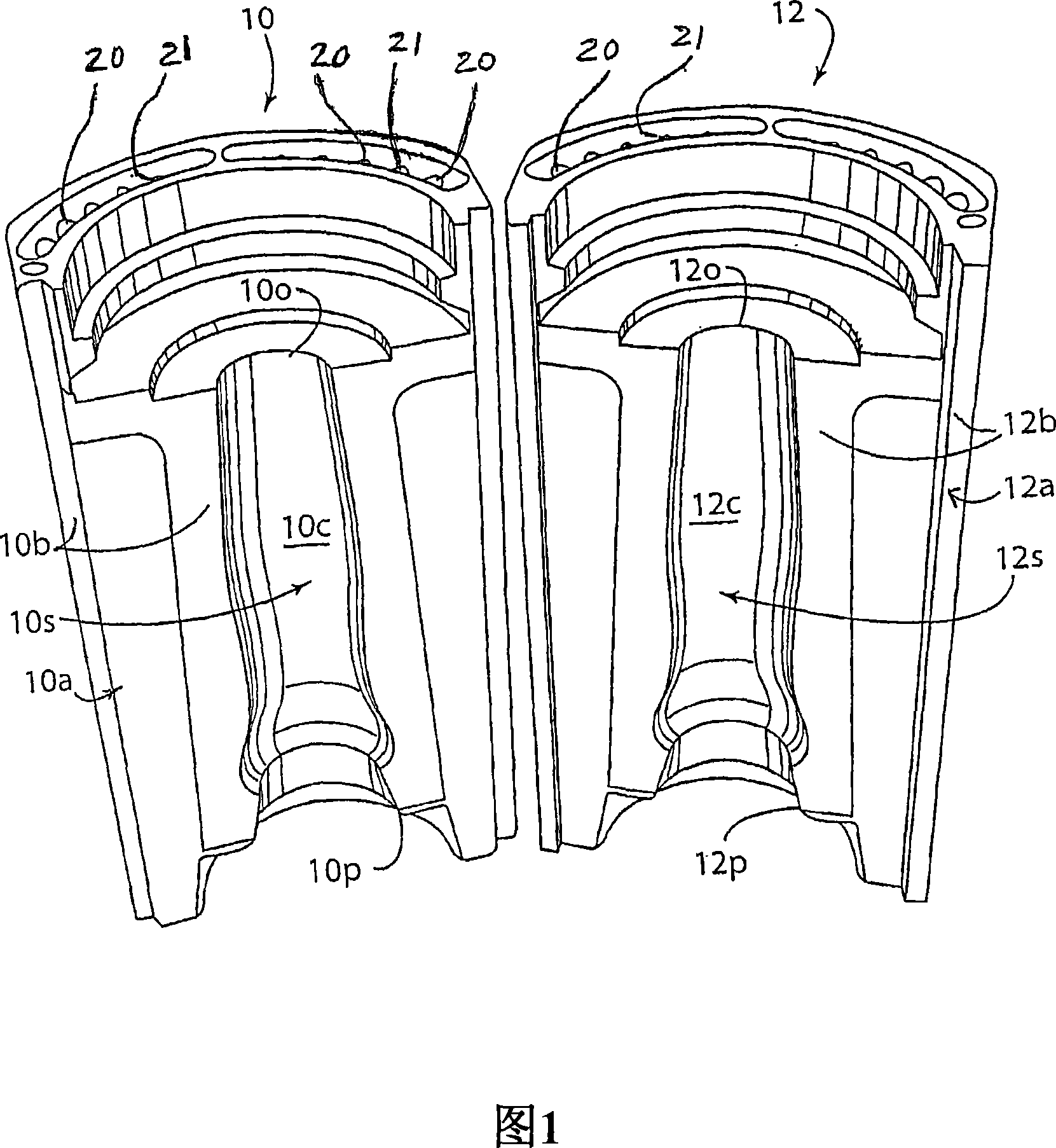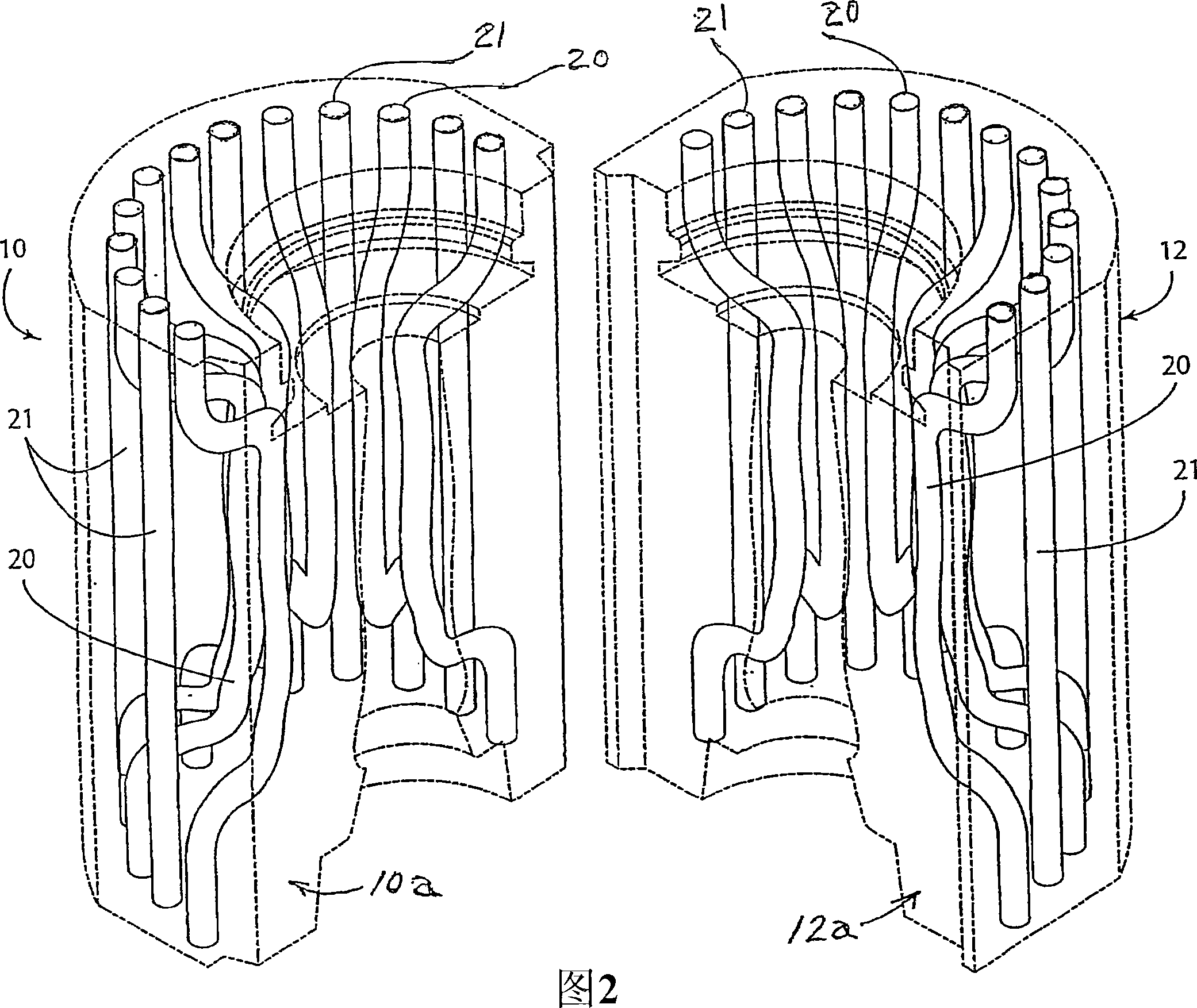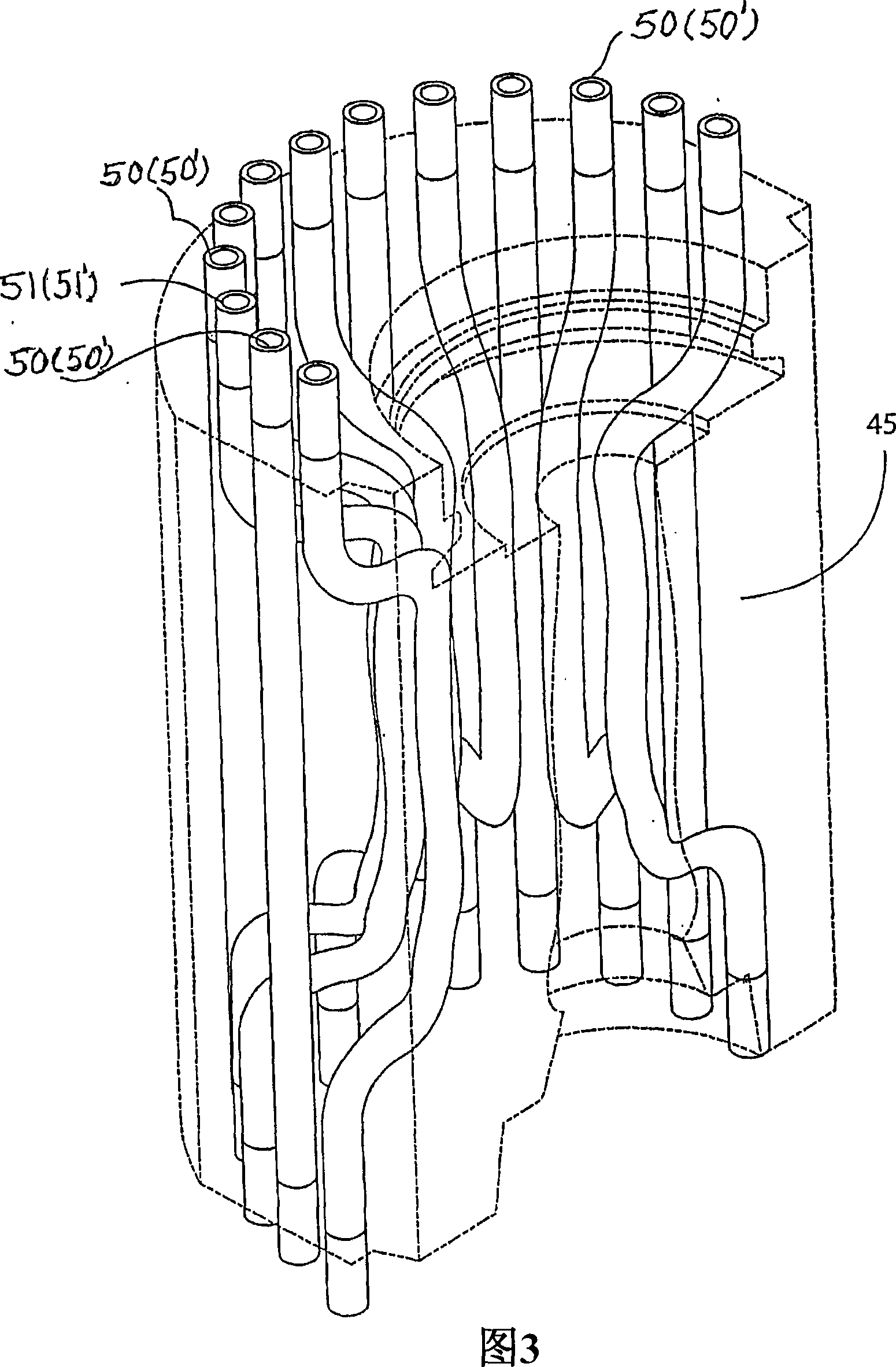Glass-forming die and method
A glass forming and mold technology, applied in glass forming, glass blowing, glass pressing, etc., can solve problems such as thermomechanical fatigue cracks, achieve large output, increase mold life, and improve uniformity
- Summary
- Abstract
- Description
- Claims
- Application Information
AI Technical Summary
Problems solved by technology
Method used
Image
Examples
Embodiment Construction
[0022] Referring to Figures 1 and 2, a pair of parison-forming molds, known as "blank" molds, are shown for molding a "block" of molten glass to form the parison mold between them during the bottle making process described above . The molds 10, 12 comprise respective mold bodies 10a, 12a having surfaces 10b, 12b which fit and contact together when the molds are closed or pressed together in a bottle making machine.
[0023] The mold body comprises respective mold cavity regions 10c, 12c which, when the molds 10, 12 are closed or pressed together in the bottle making machine, form a complete mold cavity with a three-dimensionally shaped parison. The mold cavity area is defined by respective molding surfaces 10s, 12s on the mold bodies 10a, 12a. As shown in Figure 1, each molding surface has a curved profile to collectively form a portion of the curved outer surface of the parison. In the practice of the present invention, the molding surfaces 10s, 12s may optionally be provid...
PUM
 Login to View More
Login to View More Abstract
Description
Claims
Application Information
 Login to View More
Login to View More - R&D
- Intellectual Property
- Life Sciences
- Materials
- Tech Scout
- Unparalleled Data Quality
- Higher Quality Content
- 60% Fewer Hallucinations
Browse by: Latest US Patents, China's latest patents, Technical Efficacy Thesaurus, Application Domain, Technology Topic, Popular Technical Reports.
© 2025 PatSnap. All rights reserved.Legal|Privacy policy|Modern Slavery Act Transparency Statement|Sitemap|About US| Contact US: help@patsnap.com



